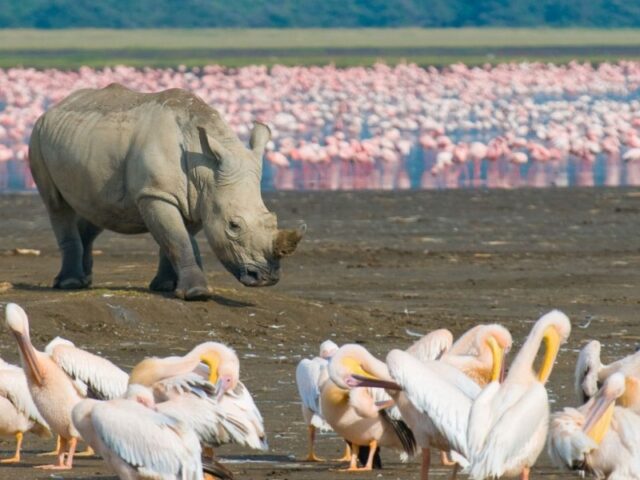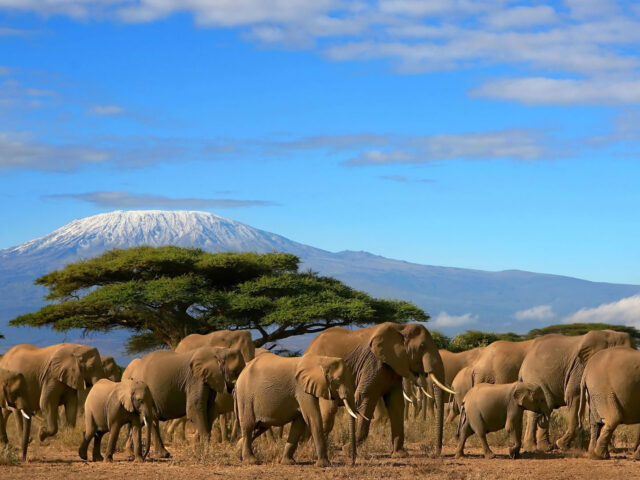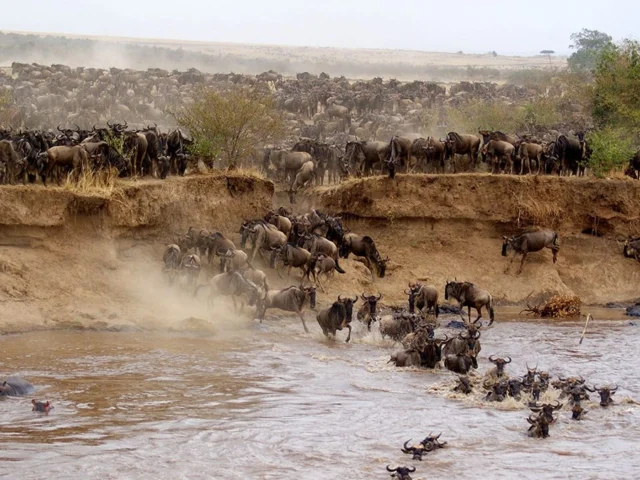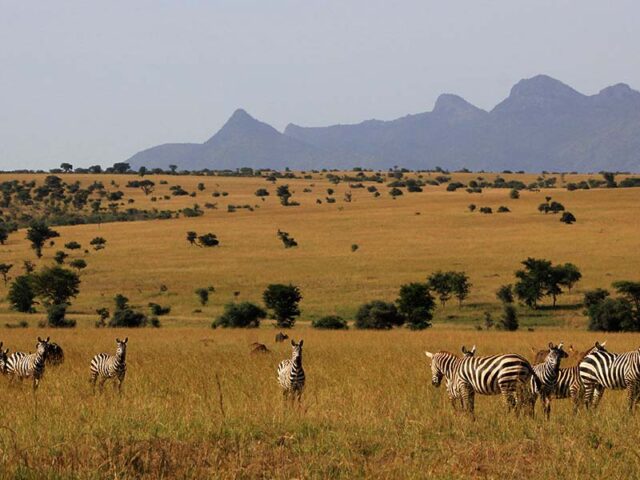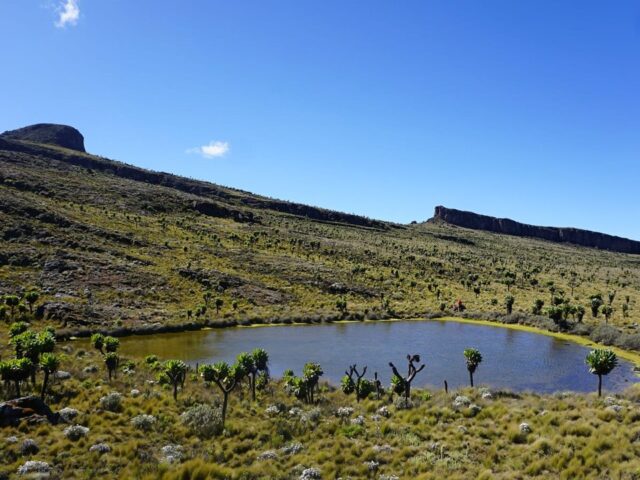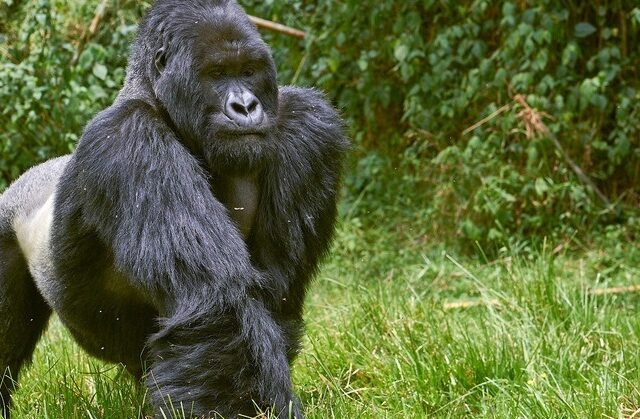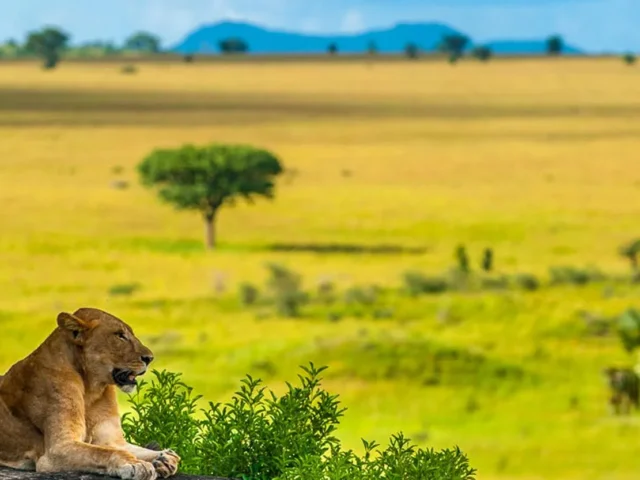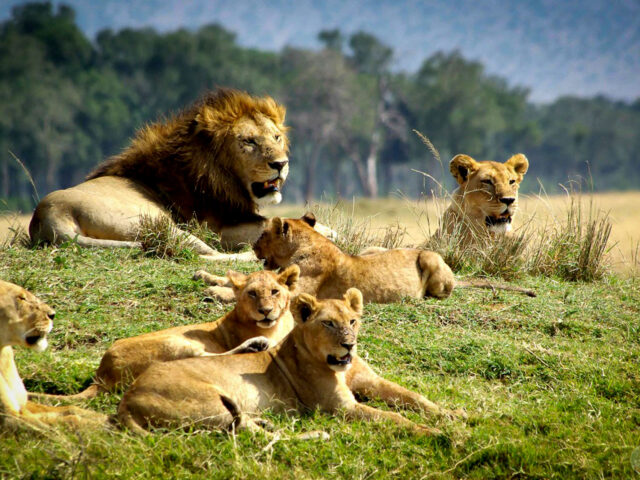
TSAVO NATIONAL PARK KENYA
About Tsavo national park Kenya: Tsavo national park is situated in the south western Kenya and it is amongst the most visited Kenya safari destinations in Kenya. This Tsavo national park is one of the largest parks in Kenya, however, it was split into 2 for easy management thus coming up with Tsavo East national park and Tsavo west national park. This park is famous for harboring a large population of lions thus the term “MAN EATERS OF TSAVO”. Other animals protected in Tsavo national park include a large heard of Elephants, Buffaloes, Aardwolf, Bushbuck, cheetah, Bush babies, Dik dik, Duikers, African wild dogs, Eland, Grant’s gazelle, Bat-eared fox, Masai giraffe, hartebeest, galago, Spotted hyena, mongoose, Gerenuk, Impala, Kudu, jackal, Porcupines, Oryx, Otters, Reedbucks, Black rhinoceros, warthogs, Zebras and many other animals that call Tsavo national park their home.
Tsavo East National Park “the Theatre of the Wild” and Tsavo west national park “the Land of Lava, springs, Man-Eaters and Magical Sunsets” were split by the railway but combining these 2 parks makes up a total area of about 23,000 Square Kilometers out of which 13,747 Square Kilometers is covered by Tsavo East National park and the remaining 9,065 km2 is occupied by Tsavo west national park. With this park size, Tsavo national park remains the largest park in Kenya and yet the oldest as it was gazette in 1948 to protect its diverse fauna and flora species.
Tsavo national park obtained its name from River Tsavo that reverses the park from West to East. The park is bordering Chyulu Hills national park as well as Mkomazi Game Reserve all located in Tanzania the bordering country to Kenya in the South.

The vegetation cover of Tsavo national park consists of semi-arid and savanna grassland, mountains, and woodlands which all act as a habitat for several wildlife species. Both Tsavo east national park and Tsavo west national park have a great vegetation for wildlife viewing and the parks harbor abundant of wildlife including the Man Eaters and many more. Actually during the construction of the railway that separate Tsavo East National park and Tsavo West national park, the lions used to attack the workers and sometimes kill them but today, these lions are a major tourist attraction of the park thus if you hear about Tsavo national park, the 1st thing to think about are the Man eating lions.
Tsavo National park is one of those parks managed by the Kenya Wildlife services (KWS) which is a managing body for all the protected parks in Kenya thus it helps in protecting and conserving this park.
The entrance fees to Tsavo national park just like other safari destinations in Kenya are categorized according to residence status and the age group. For instance, foreign nonresident adults pay 52 USD for entrance fees while the children pay 40USD. The entrance fees enable tourists to access the park and they are always paid on a daily basis valid for 24 hours. For foreign Residents and East Africans, their entrance fees can be paid in Kenyan shillings. The fees are similar for both Tsavo East national park and Tsavo West national park. The entrance fees can be paid at the park entrance depending in which gate you access the park from. Some of the gates used to access Tsavo national park include Chyulu gate, Jipe gate, Maktau gate, Kasigau gate and Mbuyuni gate which are for Tsavo West national park. While for Tsavo East national park, tourists access the park through Sala gate, Voi gate, Manyani gate and Buchuma gate.


